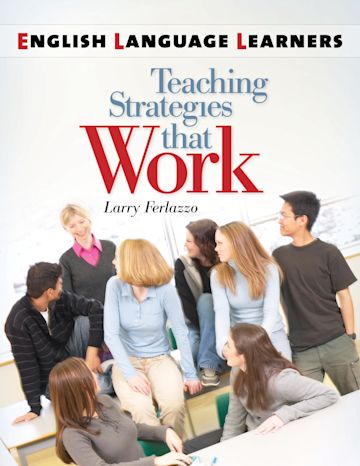This product is usually dispatched within 3 days
Free US delivery on orders $35 or over
You must sign in to add this item to your wishlist. Please sign in or create an account
This unique new perspective and method for teaching English Language Learners is the proven result of the author's community organizing career and his successful career in the classroom.
Written by an award-winning practitioner, English Language Learners: Teaching Strategies that Work offers educators a five-step methodology for teaching this burgeoning population. Rather than viewing these students through the typical lens of "deficits" they might have, the process helps educators recognize and use the assets ELLs bring to the classroom.
The five principles around which the process revolves are: building relationships, accessing prior knowledge through student stories, developing student leadership, learning by doing, and reflection. The book shows how these ideas can be used in all subject areas to help ELLs master both content and language using "high-order" thinking skills. In addition to providing detailed lessons, the book shares a framework teachers can use to create their own lessons, and it shows how to take advantage of technology and games as teaching tools. References to extensive research studies are included to provide evidence of effectiveness, and each lesson is linked to state standards in English Language development.
| Published | Apr 06 2010 |
|---|---|
| Format | Paperback |
| Edition | 1st |
| Extent | 156 |
| ISBN | 9781586835248 |
| Imprint | Linworth |
| Dimensions | 11 x 8 inches |
| Publisher | Bloomsbury Publishing |
If you agree that ELL and other students considered 'high-need' are often treated as individuals with deficits to be addressed rather than potential to be developed, you'll find important messages … in Larry's latest book.
Teacher Leaders Network
What stands out about Larry Ferlazzo's new book…from others that describe strategies to engage high school ELLs are his suggestions for how to encourage such students to be leaders.
Education Week
If you're stuck on how to become a better ELL teacher beyond the instruction, this book is for you.
Teacher Leaders Network
…an invaluable and instructive introduction for classroom teachers and their aides. . . . offers practical ideas and detailed lessons that take useful advantage of technology and games as teaching tools, create and adapt lessons to individual student needs, and so much more. Informed and informative, English Language Learners is enhanced with references to extensive research students and the linking of each individual lesson with state standards in English language development, making it a core addition to ESL and ELL instruction guide reference collections.
Midwest Book Review
This useful title contains a lot of good information for teachers and English language learners. . . . It is packed with practical, pertinent ideas and activities. Recommended.
Library Media Connection
Free US delivery on orders $35 or over
Your School account is not valid for the United States site. You have been logged out of your account.
You are on the United States site. Would you like to go to the United States site?
Error message.

